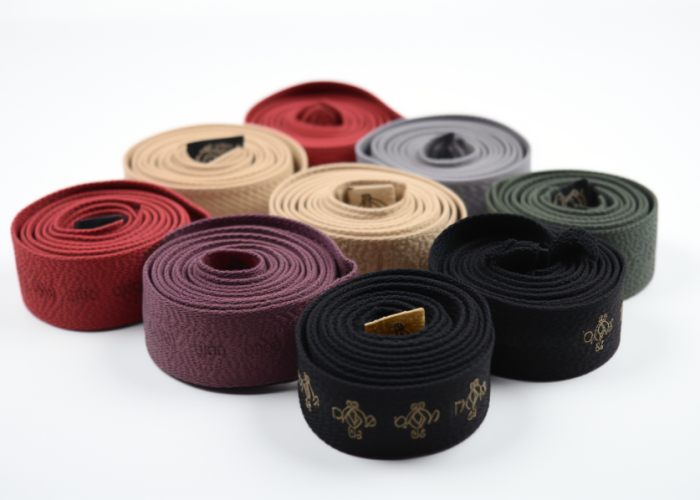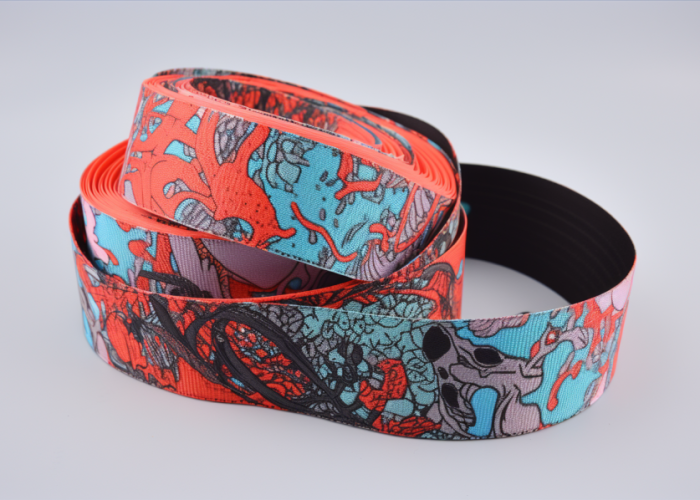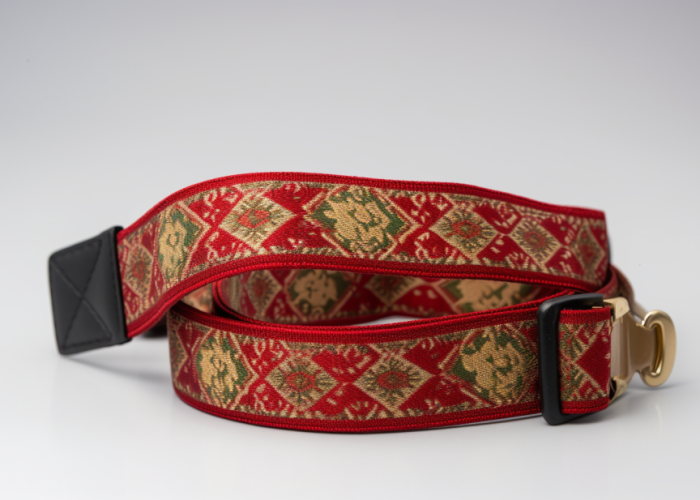As a custom webbing manufacturer, we regularly help product developers navigate cotton webbing printing decisions for their designs. Many engineers contact us unsure whether cotton webbing can deliver the print quality and durability their products require, or which printing method best fits their application and budget constraints.
Cotton webbing supports screen printing, digital printing, heat transfer, and silicone ink methods. Screen printing offers strong durability for bold logos. Digital printing allows detailed, full-color designs. Heat transfer is ideal for complex graphics, while silicone ink provides flexible, high-friction prints. The best method depends on design complexity, durability needs, and production volume.
Get expert guidance on printing cotton webbing with performance data, cost analysis, and method comparisons to avoid delays and ensure success.


Webbing manufacturing expert with 15+ years of experience helping product developers build high-performance straps for industrial, medical, and outdoor use.
Cotton webbing accepts ink well and provides good print adhesion, making it suitable for indoor applications and fashion accessories where moderate durability is acceptable. However, cotton’s natural fiber properties create limitations for high-performance applications requiring superior wash resistance, UV stability, or moisture exposure compared to synthetic alternatives like polyester webbing.
Key Cotton Webbing Print Performance:
From our manufacturing experience, cotton webbing works excellently for handbag straps, apparel belts, and upholstery applications where comfort and natural aesthetics matter most. However, for outdoor gear or marine applications requiring UV exposure resistance, polyester webbing delivers superior long-term color retention and dimensional stability.
Cotton webbing printing must meet OEKO-TEX Standard 100 requirements for textile safety, with color fastness testing following ISO 105 standards requiring minimum Grade 3 performance for commercial applications.
Design Takeaway: Choose cotton webbing for printed applications prioritizing comfort and natural aesthetics in indoor environments. For high-durability or outdoor applications, specify polyester webbing to ensure long-term print performance.

Printing reduces cotton webbing tensile strength by 15-25% depending on ink penetration depth and curing temperature, with heat-based methods causing the most significant strength reduction. Screen printing typically causes 15-18% strength loss, while heat transfer printing can reduce strength by 20-25% due to high-temperature processing that affects cotton fiber integrity.
Strength Impact by Printing Method:
From our testing experience, printed cotton webbing for handbag straps rated at 1000 lbs breaking strength drops to approximately 800 lbs after screen printing. For load-bearing applications like safety harnesses or climbing gear, this reduction requires safety factor adjustments. We’ve seen design failures when engineers don’t account for this strength loss in structural calculations.
Testing must follow ASTM D5034 grab test standards for accurate tensile measurements, with printed samples tested after full curing cycles. Safety applications require minimum 5:1 safety factors to compensate for printing-induced strength reduction.
Design Takeaway: Always specify 25-30% higher baseline webbing strength to compensate for printing losses. For critical load-bearing applications, conduct tensile testing on printed samples before finalizing product specifications to ensure safety margins are maintained.
Screen printing works best for production runs over 500 yards requiring maximum durability, while digital printing excels for complex designs under 100 yards, and heat transfer suits small custom batches with simple graphics. Method selection depends on your design complexity, production volume, and end-use durability requirements.
Method Performance Comparison:
From our manufacturing experience, fashion brands choose screen printing for handbag straps and belts requiring long-term durability. Tech companies prefer digital printing for complex logos with gradients on promotional lanyards. Heat transfer works well for corporate events needing quick custom samples. Silicone ink printing delivers excellent results for outdoor gear requiring waterproof, tactile graphics.
Print durability testing should follow AATCC Test Method 61 for colorfastness to laundering, with minimum Grade 3 performance required for commercial applications. UV resistance testing per AATCC 16 ensures outdoor performance standards.
Design Takeaway: Choose screen printing for high-volume, high-durability applications. Select digital printing for complex designs or small quantities. Use heat transfer for prototypes and quick samples. Specify testing requirements based on your product’s expected use conditions.
Printing Method Thin Webbing (<1mm) Medium Webbing (1-2mm) Thick Webbing (>2mm)
Screen Printing Ink may bleed through; less durable Good ink absorption; clear edges Best results; optimal ink deposit; may cause registration issues with multi-color designs
Heat Transfer Quick heating; risk of distortion Optimal results; balanced heat distribution Requires increased temperature and dwell time; uneven transfers possible
Digital Printing Print-through issues; quick drying Best results; balanced absorption Printhead clearance issues; extended drying time
Dye Sublimation Best results; complete dye activation Acceptable with proper settings Poor results; insufficient heat penetration
Embroidery Puckering; limited stitch count Good stability; moderate detail Best results; higher stitch counts possible; dimensional designs
Pad/Tampo Limited ink deposit; quick drying Good detail reproduction Printing surface irregularities; ink pooling possible
Inkjet/Digital Direct Bleed-through common; rapid drying Best balance of absorption and definition May cause printhead striking; longer cure times
Cotton webbing printing costs range from $0.15-0.75 per yard depending on method, plus setup fees of $150-800, with screen printing offering the lowest per-yard costs for volumes over 500 yards. Digital printing commands premium pricing but eliminates setup costs for small runs, while heat transfer provides mid-range pricing with moderate setup requirements.
Cost Breakdown by Method:
From our manufacturing experience, fashion accessory brands typically budget $0.20-0.30/yard for basic logo screen printing on 1000+ yard orders. Tech companies ordering custom lanyards in 50-100 yard quantities find digital printing most economical at $0.50-0.65/yard. Promotional product companies use heat transfer for corporate events, accepting higher per-yard costs for quick 2-week turnaround on 200-yard orders.
Industry pricing benchmarks show premium cotton webbing (certified organic, GOTS-compliant) adds 15-25% to base printing costs. Quality certifications like OEKO-TEX testing add $200-400 per colorway for compliance documentation.
Design Takeaway: Calculate total project costs including setup fees to determine break-even points. For runs under 200 yards, digital printing typically offers better value despite higher per-yard rates. Budget 20-30% contingency for color matching and quality certification requirements.

Cotton webbing printing supports maximum 300 DPI resolution with 6-color screen printing limits, 2mm minimum line width, and design registration tolerances of ±1mm due to cotton’s natural fiber texture and weave structure. Digital printing offers unlimited colors but faces resolution constraints from cotton’s absorbent surface affecting fine detail reproduction.
Design Specification Limits:
From our design optimization experience, corporate logos with fine serif fonts often require modification to 3mm stroke width for reliable cotton printing. Fashion brands learn to avoid gradients under 5mm width as cotton fibers cause color bleeding. We regularly advise clients to simplify intricate patterns – designs with 0.5mm details that work on polyester fail on cotton webbing due to fiber absorption and surface texture.
Print quality specifications should reference ISO 12647 standards for process control, with cotton webbing requiring modified tolerances due to substrate limitations. Color matching follows Pantone textile standards with ±2 Delta E tolerance acceptance.
Design Takeaway: Simplify artwork for cotton substrates – increase line weights, reduce fine details, and limit color gradients. Provide vector files with 3mm minimum features and specify Pantone textile colors for accurate matching. Test print samples on actual cotton webbing before full production to verify design reproduction quality.
Cotton webbing requires mercerization at 320°F, complete desizing, and 8-10% moisture control before printing to ensure proper ink adhesion and prevent defects. Untreated cotton shows 60-70% higher failure rates including color bleeding, poor edge definition, and premature print wear.
Mercerization treatment using caustic soda at 320°F for 3-5 minutes improves dye affinity by 40% compared to untreated cotton. Desizing removes starch and PVA manufacturing agents that create barriers preventing ink penetration. Moisture control at 8-10% prevents dimensional changes during printing that cause registration problems.
From our quality control experience, fashion accessories requiring vibrant colors need full mercerization to achieve brand color standards. We’ve traced outdoor gear strap failures directly to inadequate desizing – residual chemicals prevented proper ink bonding, causing premature wear after 50-100 wash cycles instead of expected 300+ cycles.
Chemical handling must comply with OSHA safety standards for caustic materials, with EPA water discharge regulations governing textile processing waste.
Design Takeaway: Specify pretreatment requirements in manufacturing specifications and budget 2-3 days additional lead time. Request pretreatment certification from suppliers to verify process compliance and quality standards.

Cotton webbing printing works effectively for indoor applications requiring natural aesthetics and moderate durability, with screen printing delivering optimal longevity for high-volume production. For superior outdoor performance and UV resistance, polyester webbing provides better long-term value. Contact us to explore manufacturing solutions tailored to your cotton webbing printing requirements.
Printed cotton webbing performs poorly outdoors due to UV sensitivity and moisture absorption. For outdoor applications, we recommend polyester webbing which offers superior color retention and weather resistance.
We require vector files (AI, EPS, or PDF) with 300 DPI resolution, 3mm minimum line widths, and Pantone textile color specifications. Avoid gradients under 5mm width for optimal cotton reproduction.
Production typically takes 7-14 days including pretreatment, printing, and curing processes. Digital printing offers faster 3-5 day turnaround, while screen printing requires additional setup time.
Yes, printing reduces cotton webbing tensile strength by 15-25% depending on method. Screen printing causes least impact (15-18% reduction), while heat transfer has highest impact (20-25% reduction).
Screen-printed cotton webbing typically lasts 300-500 wash cycles with proper care, while digital prints last 150-250 cycles. Heat transfer prints generally withstand 100-150 cycles before noticeable fading or cracking occurs.
Screen printing requires 500+ yard minimums due to setup costs, while digital printing has no minimum orders. Heat transfer printing works economically for 100-500 yard runs with moderate setup requirements.